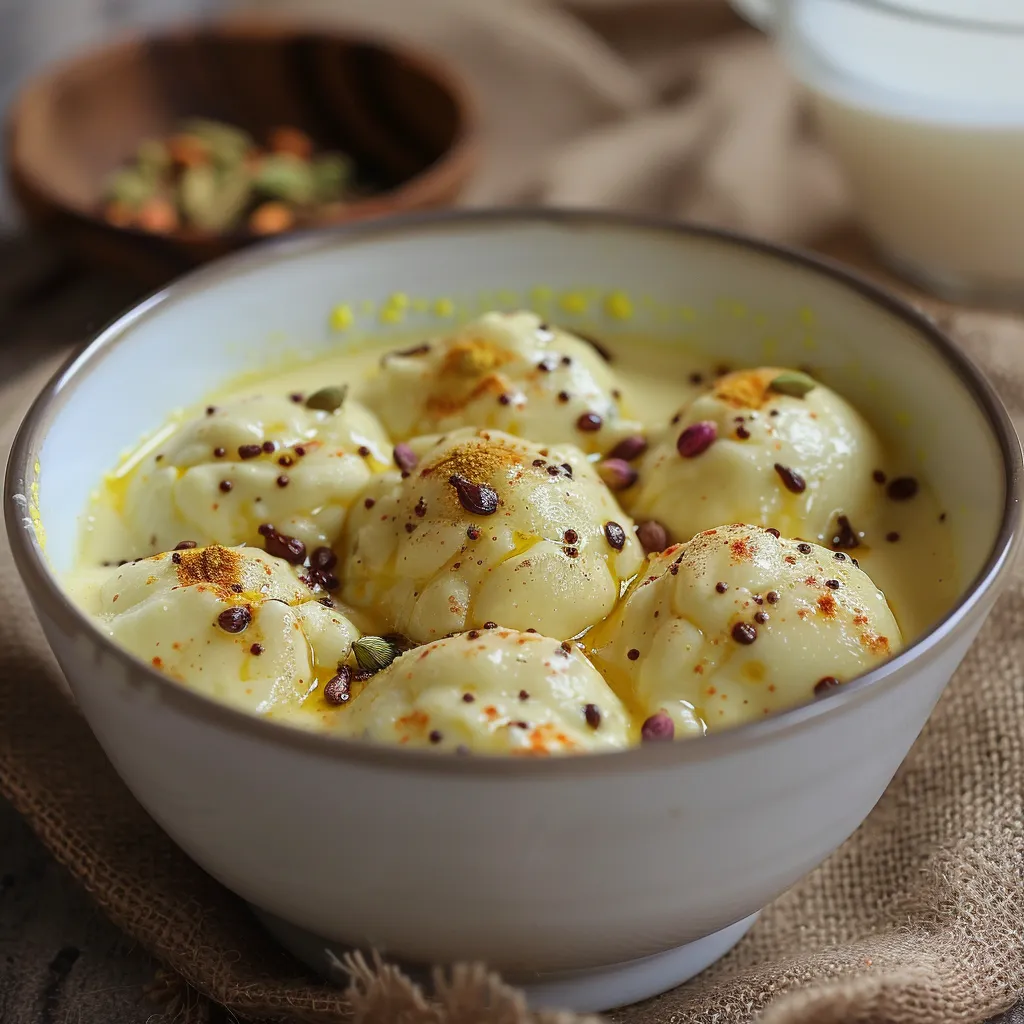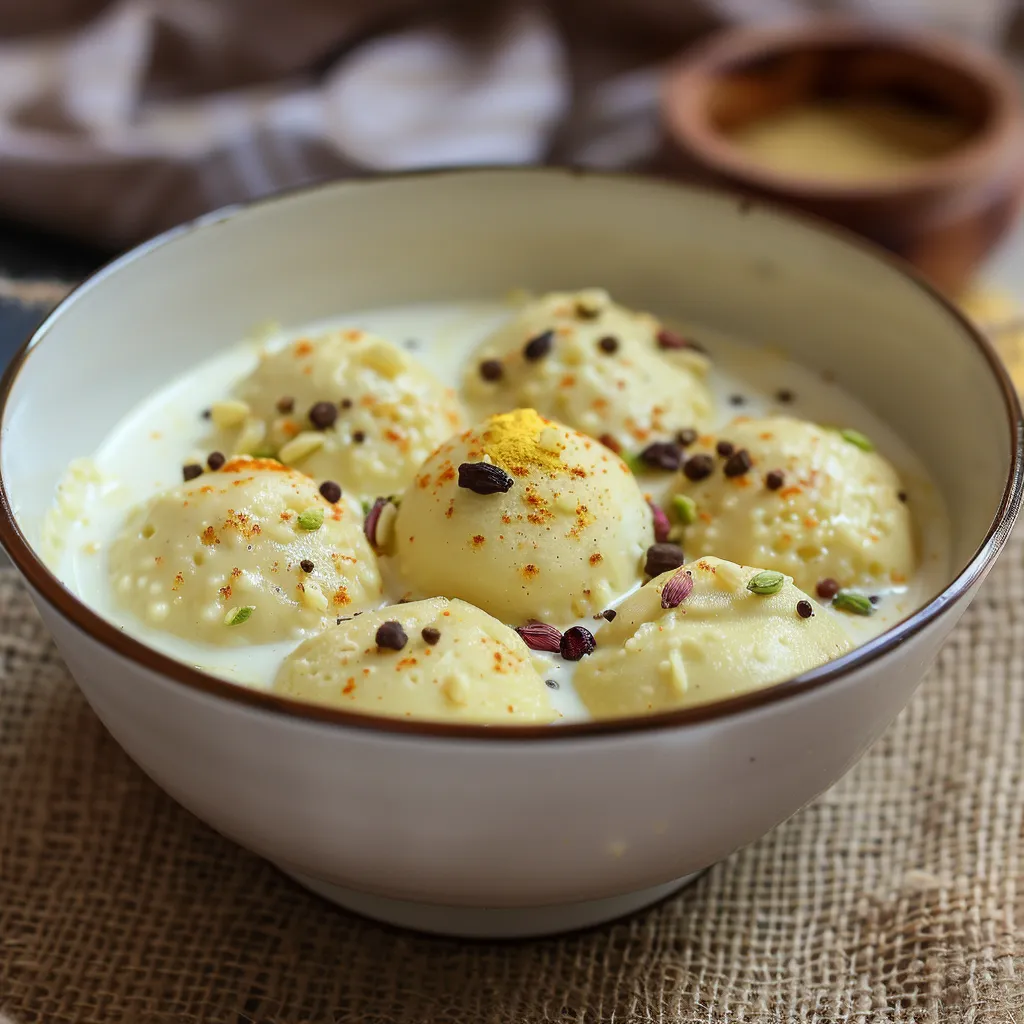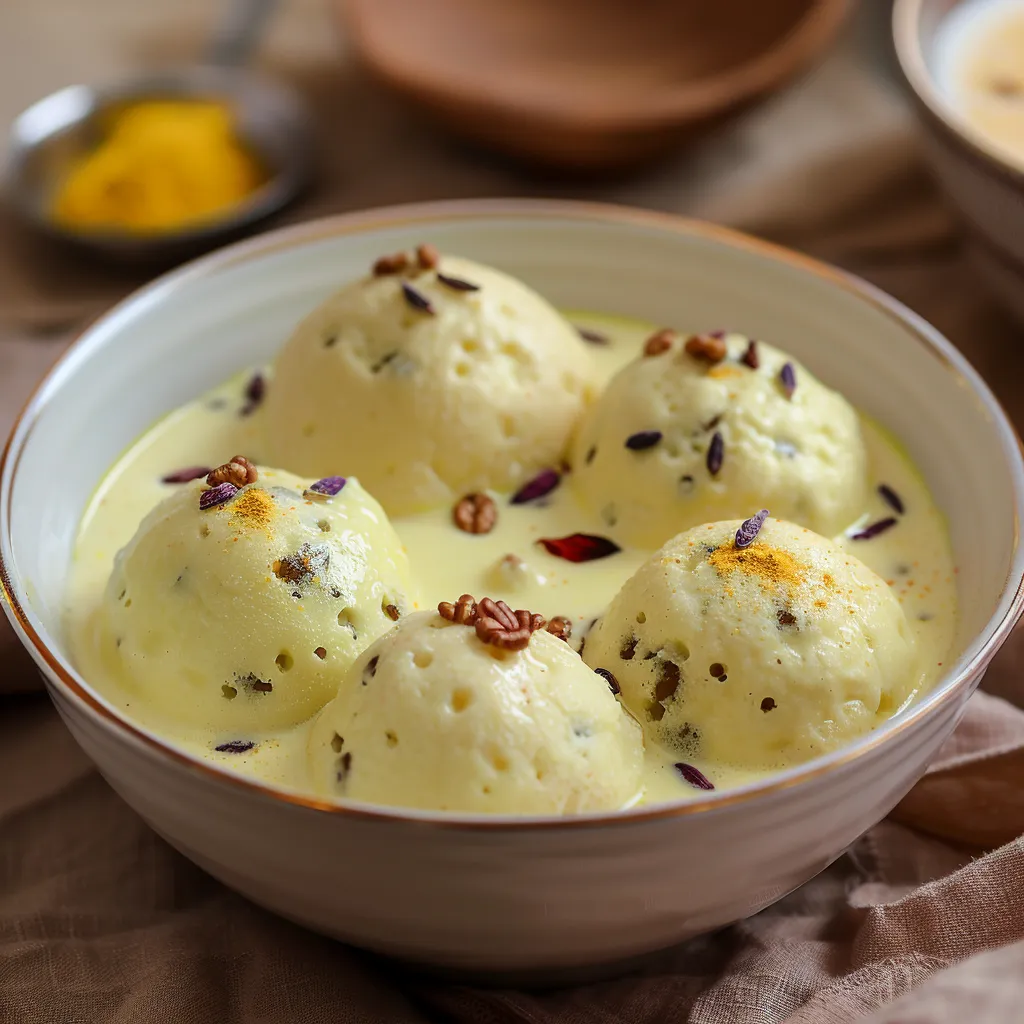 Pin it
Pin it
Delicate paneer discs bathed in saffron-infused milk create a dessert that's both elegant and indulgent. This traditional Bengali sweet combines subtle textures and rich flavors, resulting in pillowy soft dumplings that literally melt in your mouth, swimming in creamy, aromatic rabdi.
Through countless attempts at perfecting this recipe, I've discovered that gentle handling of the chenna is crucial for achieving that coveted melt-in-your-mouth texture.
Essential Components
- Full-Cream Milk: Use fresh milk with a high fat content (minimum 6%) for the richest, creamiest results. The fat ensures a smooth texture in dairy-based recipes.
- White Vinegar or Fresh Lemon Juice: Essential for curdling milk perfectly, these acids help separate whey efficiently, creating soft, well-formed curds.
- Premium Quality Saffron Threads: Choose deep red saffron threads without yellow portions for the best aroma, flavor, and vibrant color.
- Fresh Green Cardamom Pods: Use whole, aromatic pods that release their fragrance when crushed. They add warmth and depth to desserts and beverages.
- Nuts: Always use fresh, carefully chopped nuts to maintain crunch and enhance flavor. Stale or pre-ground nuts can lose their natural oils and taste.
- Pure Cane Sugar: Opt for high-quality cane sugar to achieve clean, natural sweetness without artificial aftertaste.
- Muslin Cheesecloth: A fine-weaved cheesecloth ensures proper straining, allowing excess liquid to drain while keeping the curds intact.
Culinary Artistry
- Chenna Creation:
- Heat milk gradually to prevent scorching. Add acid slowly while stirring gently in one direction. Watch for clear whey separation indicating perfect curdling. Rinse thoroughly but gently to remove any trace of acid while preserving milk solids.
- Dough Development:
- Knead chenna with incredibly light pressure using palm heel only. Stop at the first sign of smoothness - over-kneading leads to tough rasmalai. Test consistency by rolling a small portion - it should hold shape without cracks.
- Sugar Syrup Symphony:
- Maintain gentle simmer throughout cooking process. Watch for slight thread formation when syrup is dropped from spoon. Keep lid tight during cooking to ensure even heat distribution.
- Rabdi Perfection:
- Reduce milk over low heat, stirring constantly to prevent skin formation. Watch for slight thickening - rabdi should coat the back of a spoon but remain pourable.
 Pin it
Pin it
My Bengali grandmother taught me to add a single drop of rose water to the rabdi - it adds an ethereal fragrance that makes this dessert unforgettable.
Perfect Presentation
Serve this ethereal dessert in traditional clay bowls or elegant glass dishes that showcase the saffron-tinted rabdi. Each serving should feature 2-3 rasmalai discs partially submerged in the creamy rabdi. Garnish with a few saffron strands, finely sliced pistachios, and almonds arranged in a delicate pattern. A light dusting of cardamom powder adds both aroma and visual appeal.
Creative Variations
Explore regional interpretations of this beloved dessert. Create a Rajasthani version by adding crushed rose petals and a touch of kewra water. Develop a modern twist with a hint of vanilla bean or orange blossom water. Some families add a touch of reduced milk (khoya) to the rabdi for extra richness, while others incorporate seasonal fruits like mangoes during summer.
Storage Mastery
Keep rasmalai refrigerated in an airtight container, ensuring the discs remain submerged in rabdi. The dessert will keep for up to 5 days, with flavors developing further over time. When serving from cold, allow to sit at room temperature for 10 minutes to enhance the texture and flavors. Avoid freezing as it can affect the delicate texture.
 Pin it
Pin it
Rasmalai represents the pinnacle of Indian dairy-based desserts. Through years of making this delicacy, I've learned that success lies in respecting the ingredients and processes. The way the soft chenna discs absorb the flavored rabdi creates a dessert that's both sophisticated and comforting. Whether served at festivals, weddings, or special gatherings, this recipe creates moments of pure joy with every spoonful.
Frequently Asked Questions
- → Why did my rasmalai turn hard?
- Over-kneading the chenna is usually the cause. Knead gently just until smooth to keep the dumplings soft.
- → Can I make rasmalai ahead of time?
- Yes, it can be refrigerated for up to 3 days. In fact, the flavor improves after soaking overnight.
- → Why isn't my milk curdling properly?
- Milk should be hot but not boiling when adding vinegar. If needed, add an extra teaspoon of vinegar.
- → Is it normal for the dumplings to double in size?
- Yes, the dumplings should approximately double while cooking in the sugar syrup. This indicates they're properly cooked.
- → How thick should the rabdi be?
- The rabdi should be slightly thickened but still flowing, as too thick a rabdi won't be absorbed properly by the dumplings.
